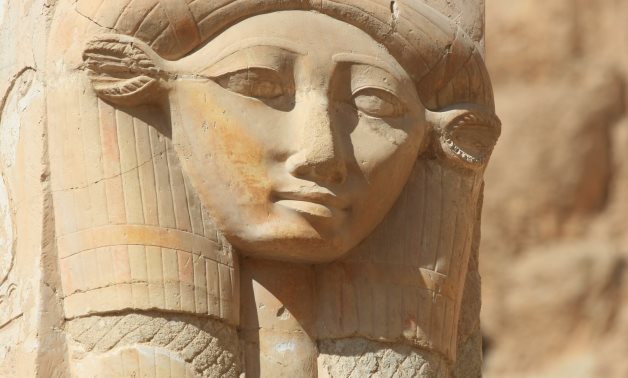Recent excavations in Spain's Salamanca uncovers amulets belonging to Egyptian deity Hathor

Egyptian Goddess Hathor
CAIRO – 24 August 2021: The recent excavation of the San Vicente Hill in Salamanca, central northern Spain, uncovered amulets of the Egyptian goddess Hathor, which was made in ancient Egypt and reached the peninsula around 1000 BC.
The discovery came during the archaeological work that began in the 1990s led by a team of archaeologists from the University of Salamanca, headed by Antonio Blanco, the Salamanca Municipal Council, as well as archaeologists Carlos Macario and Cristina Alario.
Archaeologist Carlos Macario told the Spanish news agency that the amulets bearing the image of Hathor, the goddess of happiness, motherhood and love in ancient Egypt, reflect the trade exchange in the early years of the Iron Age between 900 and 400 BC in the Iberian Peninsula, specifically in the ancient site of Salamanca and La Plata Road after that.
The importance of this city, which was then called Salamanca, also appears in the trade routes for minerals such as iron or tin, according to WAM 24.
Archaeologists found these amulets of the goddess Hathor, and necklaces bearing the image of the same goddess in the excavations of the hill of San Vicente, which is considered the beginning of the establishment of the city of Salamanca.
Carlos Macario highlighted that these antiquities were made from blue quartz in ancient Egypt, or in the factories of the Phoenicians in that era. Ancient Egyptians used the blue quartz a lot in their artwork.
Archaeologist Macario asserted that the city of Salamanca at that time constituted part of a very important area for trade in the Iberian Peninsula, which was reached by Phoenician merchants to "exchange products with the indigenous people", which means that it was connected to "all kinds of goods coming from ancient Egypt and imported and manufactured parts in the western Mediterranean".
The Egyptian pieces appeared during excavations in the house of one of the most important men in the city of Salamanca at the time. The ancient Egyptians put these amulets in tombs to accompany the body at death.
-- Sent from my Linux system.
No comments:
Post a Comment